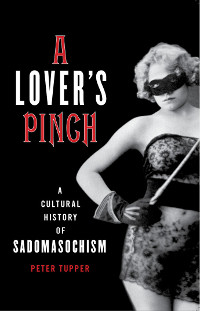Elizabeth of the Alternative Journey blog calls Jack Bauer, the hero(?) of 24, her “ultimate conquered male.”
Bitchy Jones followed up with a related post on male suffering and heroism.
Male submission and the archetypal heroic narrative are basically interchangeable. But somehow submissive men (and, I guess, a lot of people in general) seemed to have been tricked into thinking submission is basically feminine; that submissive men need to create feminine personas to make their submission make sense, get I touch with their feminine sides.
Which is bollocks.
…
Submissive men are heroes. Every time they take off their clothes. Which they should do both frequently and often.Look, Prometheus stole fire for humans and was, in retaliation, tortured daily for 30,000 years (sm). Atlas holds up the fucking sky on his shoulders (predicament bondage).
And then there’s Jesus Christ. Where to begin? Sacrifice? Submission? Dying for all our sins? Nails? Hot jewish guy in pain and mostly naked? My god, my god, why have you forsaken me? He safewords on the cross! I fucking loved Sunday school.
Do you see what page I’m on? Every story of heroism. From then to now.
Dr Jack says to the evil ‘others’ in Lost – let my friends go and you can do what you want with me.
Angel goes back to fight in the Ring even when he could walk free because he can’t leave the other demons to their fate.
Goddamnit, Indy, where doesn’t it hurt?
And Elizabeth has covered Jack Bauer in detail. (She’s an inspiration – that woman.)
Bauer suffers, certainly, but is he a masochist? His suffering is incidental to his mission. He does not suffer for its own sake, or find meaning in it. Arguably, he undergoes torture out of guilt for his own actions. Bauer’s distinguishing characteristic, at least in my mind, is sadism. Over the course of the series he mentally and physically tortures several people, kills a man in cold blood and cuts off his head with a hacksaw, and executes people on his own side. Like Richardson’s Lovelace and Sade’s libertines, Bauer justifies his actions by claiming he is aware of a higher truth about the nature of the world.
I’d call Bauer a stoic, not a masochist. Masochists suffer; stoics endure. A masochist wants to feel deeply, while a stoic wants not to feel pain or pleasure.
Old school male heroes, the John Wayne/Humphrey Bogart/Gary Cooper generation, were defined by stoicism, their immunity to fear, pain, exhaustion and loss.
The thing is, stoicism can easily shade into masochism. In order to prove one has the proper stoic’s indifference to pain, one seeks out suffering, makes a performance out of it. Is masochism the sign of a person insecure in stoicism?
It’s later on, starting around 1990, that we get male action heroes who not only suffer, but make flamboyant displays of suffering. Mel Gibson’s characters are often tortured in his films, while Bruce Willis weeping while picking broken glass out of his bare feet in Die Hard is a far cry from Sylvester Stallone as Rambo cauterizing his own wounds with gunpowder.
Furthermore, masochism can be a relief from stoicism, saying, “Yes, it does hurt, but I can still take it!” Masochism was defined as a specifically male problem by Kraff-Ebing when the masculine ideal was the height of stoicism, and self-sacrifice was the female ideal. Sacher-Masoch could be viewed as a holdover from the previous century’s culture of sensibility.
I’ve been talking about male characters so far, but what about women? Currently, there are two female characters on TV who are defined by their capacity to withstand suffering. Claire Bennet of Heroes and Jane Vasco of Painkiller Jane both have superhuman regenerative abilities, being nearly impossible to kill. Their storylines offer plenty of scenes of them being injured and recovering, and their willingness to undergo harm is a big part of their heroism.
However, Jane feels pain, while Claire doesn’t, or not as most people do. Does that mean Jane is masochistic, while Claire is stoic? Or does it mean that Jane is the stoic, ignoring pain, while Claire is the true masochist, experiencing intense physical sensations as pleasure?
Ariel Glucklich’s book Sacred Pain emphasizes that we do not just experience pain, we interpret it, assign it meaning in our life stories. A stoic sees pain as a distraction, to be ignored, or perhaps as proof of determination to accomplish goals. A masochist sees pain as a way to get outside our self.
